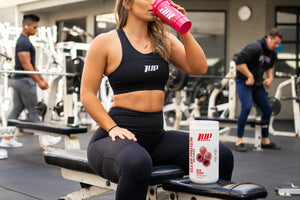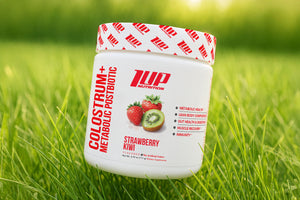No doubt you’ve heard the fitness axiom that “muscle doesn’t grow in the gym, it grows outside of the gym.”
Intra Workout
Intra workout recovery are the lower intensity recovery periods you may take in between bouts of high intensity interval training or resistance training.
Instead of sitting on the bench or lying on the floor gasping for air, you may pace back and forth, pedal slowly on the bike, or perform some dynamic stretches/ mobility work.
This can help lower fatigue and give you a chance to collect yourself mentally and physically before your next all-out effort.
Post Workout
Following your training session, active recovery can serve as your cool down to help lower heart rate, reduce blood lactate levels, and calm a hyperactive nervous system.
After 5-10 minutes of low level movement, you can proceed to your normal cooldown stretches and/or foam rolling.
Active Recovery Day
Dedicated active recovery days are non-training days where you still engage in physical activity, but it’s different from your high intensity intervals or resistance training workouts.
Active recovery protocols are low intensity, focus on increasing circulation, and typically involve some sort of cross-training.
For instance, if you’re a bodybuilder or powerlifter, you can perform yoga or swimming on your active recovery day. Other great options are hiking, walking, hip strengthening/mobility work, or self-myofascial release.
It’s important that the active recovery protocols you choose utilize a different form of exercise compared to your typical higher intensity training protocols as this will help reduce the possibility of overuse injuries while also improving mobility and range of motion.
There’s also evidence to support that taking your active recovery outside may have a greater impact on your state of mind. Researchers noted spending time in nature (like hiking or walking on your active recovery days) may have direct and positive impact on well-being.[2]
Which is Better: Active Recovery or Rest Days?
Optimal recovery and growth includes a mixture of both active recovery and rest.
It’s not an either/or proposition.
You can (and likely should) implement both active recovery and complete rest days into your training program based on how your body is feeling.
It may help to take a reactive approach to your off days from training. If you’re feeling particularly beat up, you may opt for a full-on rest day where you don’t do much more than some light walking.
If you’re sleep, nutrition, and stress management have been stellar the past few days, then you may feel up to being a bit more active on your off days from training and thus would take an active recovery day where you are more active just not crushing the heavy weights.
Taking Recovery Seriously
Proper recovery is essential to getting results during your transformation challenge.
And, taking recovery seriously starts with making time for it in your current training schedule. If you’re one of those “go-getters” who has a hard time taking their foot off of the gas pedal and taking it easy, then it’s imperative that you schedule your active recovery and rest days just like you would your training days.
It may also help to plan out exactly what type of active recovery exercise you’re going to do on a specific day. That way, when the time comes you don’t have to waste mental and physical resources (which detract from recovery) deciding what to do.
Lastly, remember that active recovery and rest days are important and necessary. You’re not “slacking” on your training when implementing active recovery and rest days. These days help recharge your mind and body so that when you step back into the gym, you are ready to give it your all and continue to break PRs and get results!
References
- Paul Menzies, Craig Menzies, Laura McIntyre, Paul Paterson, John Wilson & Ole J. Kemi (2010) Blood lactate clearance during active recovery after an intense running bout depends on the intensity of the active recovery, Journal of Sports Sciences, 28:9, 975-982, DOI: 10.1080/02640414.2010.481721
- Bowler, D.E., Buyung-Ali, L.M., Knight, T.M. et al. A systematic review of evidence for the added benefits to health of exposure to natural environments. BMC Public Health 10, 456 (2010). https://doi.org/10.1186/1471-2458-10-456






